
The growth of online shopping has led to the establishment of ecommerce stores. It has even been projected that by 2025, online shopping will represent 24.5% of all retail sales. To stay competitive, your ecommerce store must be flexible. That's why many eCommerce companies have decided to use headless CMS software. This is because it offers a lot of benefits that traditional CMS platforms don’t. With a headless CMS, you can easily keep your content consistent across different platforms like websites, mobile apps, social media, and more. According to statistics, the headless CMS market is estimated to reach $3.8 billion in 2032. As an ecommerce owner, using the best headless CMS software is one of the many ways to take your business to the next level. In this guide, we’ll explain what a headless CMS software is, why you need it, and the top 7 Headless CMS for e-commerce.
What is a Headless CMS?
A headless CMS platform is software built to support a headless commerce model. This means it separates the website's front end (what users see) from the back end (the server and database). By splitting these parts, they can communicate more efficiently. The platform uses APIs to manage data, making operations quicker and more responsive. As a result, users will have a refreshing customer experience, which can drive sales.
Differences Between Traditional CMS and Headless CMS
The key difference between traditional and headless eCommerce is how the front-end and back-end are organized. While traditional CMS lets you manage both content (back end) and presentation (front end) in one package, a headless CMS solves the issues by separating the front end (what visitors see) from the back end (where admins manage content). With everything in one interface, you can publish content faster and make fewer mistakes. Hence, the main difference is in this separation. That's why ecommerce owners are beginning to adopt these headless models to enhance customer experience and flexibility. With the user interface separated from the back end, the headless architecture gives B2B companies great flexibility, leading to a better omnichannel customer experience.
Why Choose a Headless CMS for eCommerce?
Choosing a headless CMS for eCommerce can greatly enhance your flexibility and efficiency. It allows for easier customization, better device optimization, and quicker adaptation to changing market trends. A recent report shows that up to 57% of companies are expected to use headless commerce in 2024. Even those who have already switched to a headless ecommerce architecture notice significant improvements in time, budget, and revenue. They can get rid of the usual update problems and benefit from real speed improvements. By choosing a headless CMS, you're not only improving your website's performance but also investing in your team's satisfaction and retention.
Key Features to Look for in a Headless CMS
While you want to incorporate headless CMS for e-commerce for your business growth, it is also important to consider the features that will make your work easier. Let's take a look at some features to look for in a headless CMS:
- Content Modeling and Management
Content modeling is the backbone of any CMS. A good headless ecommerce architecture should allow you to create and manage different types of content easily. You need to look for a system that lets you define custom content types, fields, and relationships. This flexibility ensures that your CMS can handle any content structure you need, whether it’s a blog, an e-commerce site, or a portfolio. - API-First Architecture
An API-first architecture means the CMS is designed with APIs at its core. This approach provides more flexibility for developers, allowing them to integrate content with any front-end technology. If you want easy integration and content delivery across various platforms, then you should consider API. This approach allows you to send the same content stored in your CMS to different platforms through GraphQL or RESTful API. You can also manage user roles, webhooks, and content models smoothly. - Multi-Channel Publishing
The ability to publish content across multiple channels is a major benefit of a headless CMS. This feature ensures that content can be distributed to websites, mobile apps, social media, and other digital platforms. It helps maintain a consistent brand voice and user experience, regardless of where the content is being consumed. - Scalability and Performance
A good headless CMS should be able to scale as your business grows. This means handling increasing amounts of content, users, and traffic without performance issues. For example, online stores can get really busy during festive seasons. So, you will need a headless CMS that will allow product updates to be smooth and handle the traffic. Cloud-based headless CMS options often provide excellent scalability and reliability. How about you check it out? - SEO and Marketing Tools
One of the key features of headless CMS setup in e-commerce is better SEO. With traditional systems, the front end and back end are tightly connected, making it hard to optimize for search engines. A headless architecture separates them, giving you more flexibility in how your website is structured and shown to search engines. This leads to better visibility, higher rankings, and more traffic, which ultimately makes for a better customer experience.
Benefits of Using a Headless CMS for eCommerce
There are a lot of benefits that using headless ecommerce software can provide for your business. Some of them include:
Flexibility and Scalability
One of the primary benefits of a Headless CMS is the ability to tailor the frontend experience without altering the backend. This separation means that developers can create unique and engaging user interfaces that reflect your brand's identity. Whether you want a minimalist design or an interactive user experience, a Headless CMS makes it possible without compromising the stability of your backend systems. Also, a Headless CMS allows you to easily scale your operations to accommodate traffic spikes during sales events and an expanding product catalog without any performance hitches.
Omnichannel Content Delivery
These days, having an omnichannel presence is very important for eCommerce businesses. To keep growing, sellers need to meet their customers' expectations for a flawless shopping experience across all channels. With a headless setup, multi-platform integration is possible. This means that you can control your presence across various platforms, including websites, mobile apps, and IoT devices. Another big benefit of going headless is maintaining a unified brand presence across all customer touchpoints. This is needed if you want to build trust and loyalty. You can ensure your content is consistent and up-to-date on all platforms to user satisfaction and reinforce your brand identity.
Enhanced Performance and Security
In eCommerce, speed matters. Slow load times can lead to lost sales and frustrated customers. A Headless CMS optimizes content delivery for speed, ensuring that your site loads quickly. This not only enhances the user experience but also improves your SEO rankings, as search engines favor fast-loading sites. Better security is another value you get for using a headless setup in e-commerce. Separating the front end from the back end makes it harder for hackers to access sensitive information. Plus, it’s easy to add security tools like firewalls, intrusion detection systems, and encryption, giving your website and customer data extra protection.
Improved Developer Experience
As a developer, with headless ecommerce software, you can work with any your preferred frameworks and technologies. It can be a CMS, DXP, PWA, or just basic HTML and JavaScript. On the flip side, using a headless ecommerce equals faster development cycles and easier implementation of new features(agile development). Your team will quickly adapt to changing market demands and implement new features without extensive downtime or disruptions. By quickly meeting customer expectations and continuously improving in shorter periods, you can become a leader in your industry.
Future-Proofing
Technology evolves quickly, and businesses need to adapt if they want to remain in the market. A Headless CMS allows you to easily integrate with emerging technologies and new channels. This adaptability ensures that your eCommerce platform can evolve alongside technological advancements, keeping you at the forefront of innovation. Hence, future-proofing your eCommerce operations by decoupling content management from delivery systems is very important for long-term success. This separation allows you to update or change your frontend without affecting your backend infrastructure.
Top 7 Headless CMS Software for eCommerce
Selecting the right headless commerce platform can be challenging. It involves several steps and requires teamwork and thoughtful planning. Here are some recommendations for the best headless commerce platforms, depending on the current stage of your eCommerce business:
1. Contentful
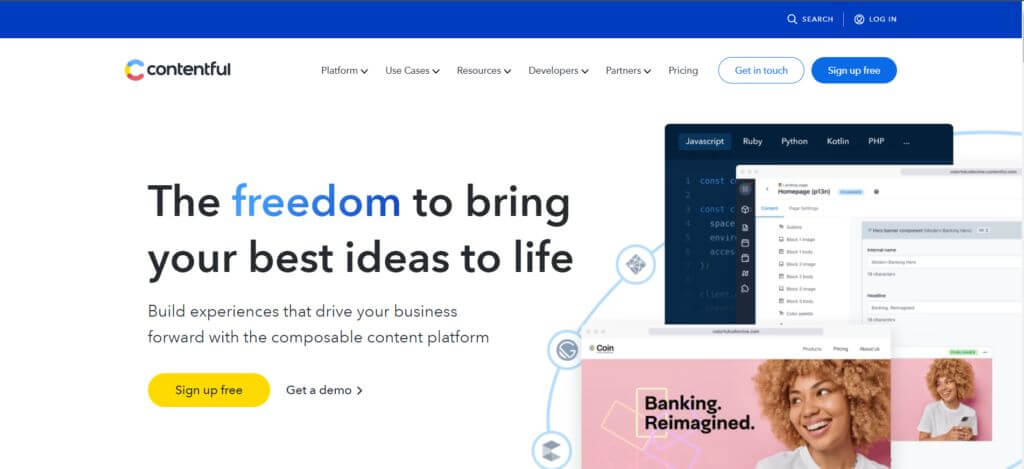
Contentful is a top open-source CMS platform that lets users create their content management systems. This German-based software was created in 2013 with a cloud-based headless CMS. It is a modern, content-focused platform. Unlike traditional CMSs, Contentful uses the cloud to manage digital content, making it perfect for teams that want to handle all their content activities in one place. The platform also allows users to design custom themes, enhancing the overall look of their site
Top 3 Features
- Robust API
- Easy content modeling
- Seamless integrations
Pros
- Highly customizable
- Excellent developer support
- Strong community and documentation
Cons
- Can be expensive for large projects
- Learning curve for non-technical users
Pricing
Various pricing plans based on usage and features.
2. Strapi
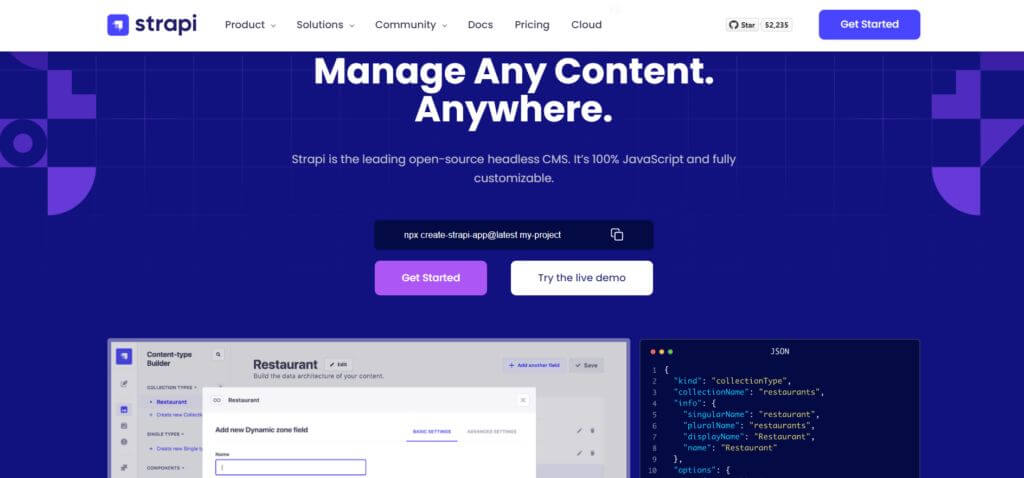
Another headless CMS software on our list is Strapi. It is an open-source headless CMS built with Node.js.One of its unique features is providing content through a fully customizable API. Let's just say it was designed to create ready-to-use Node.js APIs for real-world applications. Strapi also has a plugin system that lets developers expand its core features, connect with other services and technologies, and tailor the platform to their specific requirements.
Top 3 Features
- Customizable API
- Open-source flexibility
- Intuitive admin panel
Pros
- Free and open-source
- Strong community support
- Highly customizable
Cons
- Requires technical expertise for setup
- Limited out-of-the-box features
Pricing
Free for the community edition; enterprise plans available
3. Sanity
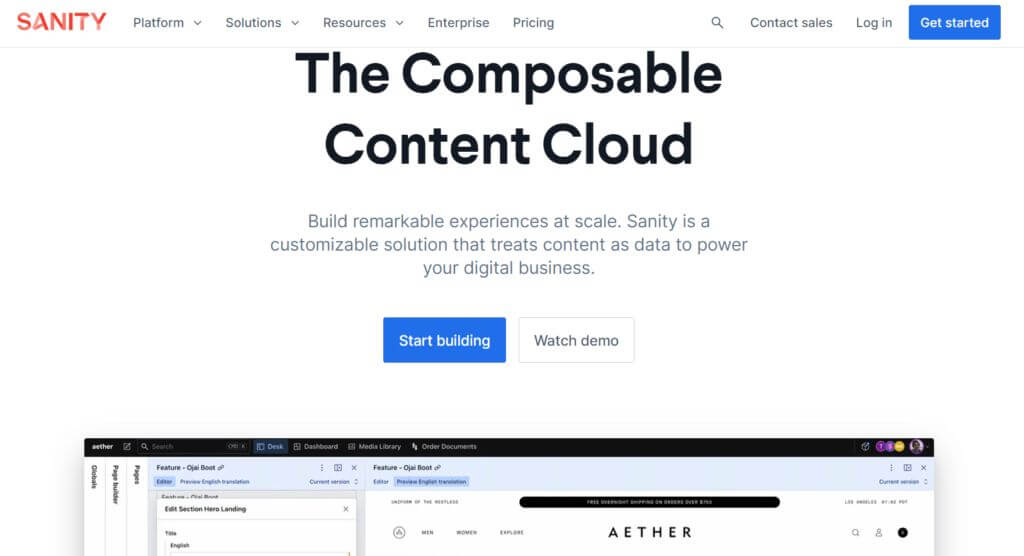
Sanity Studio is a real-time, open-source headless CMS built with modern web technologies. It uses a "content-as-data" approach, allowing developers to use any programming language or technology to create applications and websites. Also, developers can enhance its core features, connect with other services and technologies, and customize the platform to meet their specific needs.
Top 3 Features
- Real-time collaboration
- Flexible content modeling
- Powerful query language
Pros
- Real-time editing capabilities
- Strong developer tools
- Scalable and flexible
Cons
- Can be complex for beginners
- Pricing can increase with usage
Pricing
Free tier available; usage-based pricing for higher tiers.
4. Contentstack
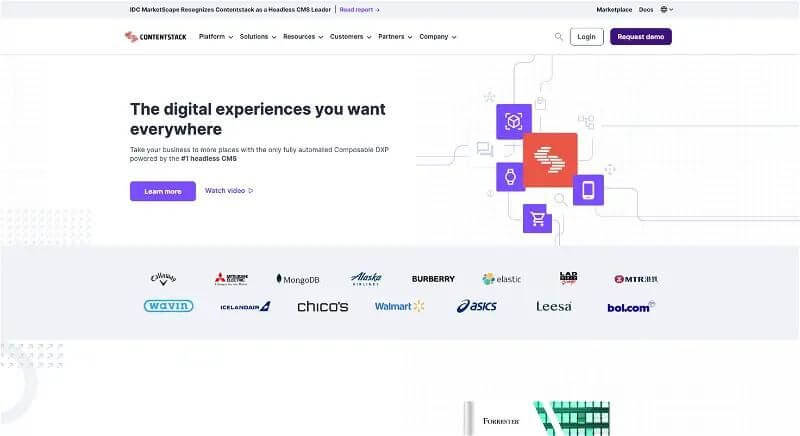
If you need a powerful headless CMS for your large business, consider Contentstack. This platform supports complex content management needs and helps companies easily manage their content across all major digital platforms. It is designed for enterprise-level eCommerce solutions, offering simple features that make it very user-friendly.
Top 3 Features
- Enterprise-grade security
- Robust API and integrations
- Omnichannel content delivery
Pros
- Scalable for large enterprises
- Excellent support and documentation
- Strong integration capabilities
Cons
- Higher cost for enterprise features
- Can be overkill for small businesses
Pricing
Enterprise pricing plans; contact for a quote.
5. Prismic
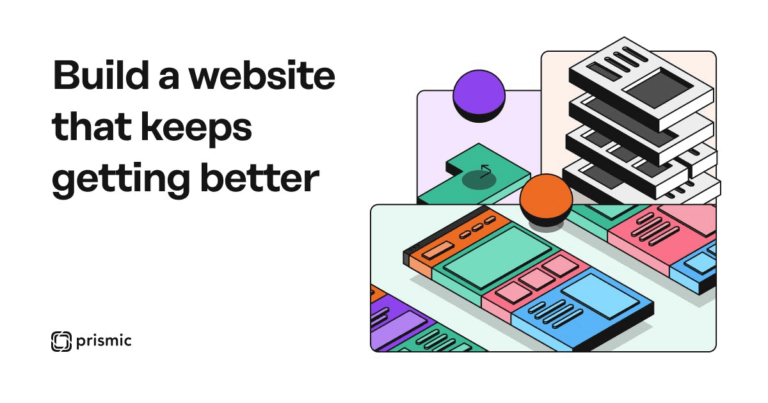
Prismic is a headless CMS that focuses on user experience and content management. It makes managing content simple and efficient with its easy-to-use interface. Prismic supports a wide range of integrations for effective content delivery, making it user-friendly for both tech-savvy developers and content creators.
Top 3 Features
- Simple and intuitive UI
- Rich content editor
- Powerful API
Pros
- Easy to use
- Great for marketing teams
- Strong support and documentation
Cons
- Limited customization compared to other CMS
- Pricing can be high for advanced features
Pricing
Free tier available; premium plans based on usage.
6. Ghost

Ghost is a blogging platform and headless CMS that focuses on simplicity and performance. It's great for blogs and newsletters, offering an easy-to-use interface and powerful tools for creating and managing content. Developers and businesses like it because it's flexible and can be customized to fit their needs.
Top 3 Features
- Fast and lightweight
- Simple content management
- SEO-friendly
Pros
- Easy to set up and use
- Great for content-focused websites
- Affordable pricing
Cons
- Limited features for complex eCommerce needs
- Not as flexible as other headless CMS
Pricing
Various pricing plans starting with a free tier
7. Netlify CMS
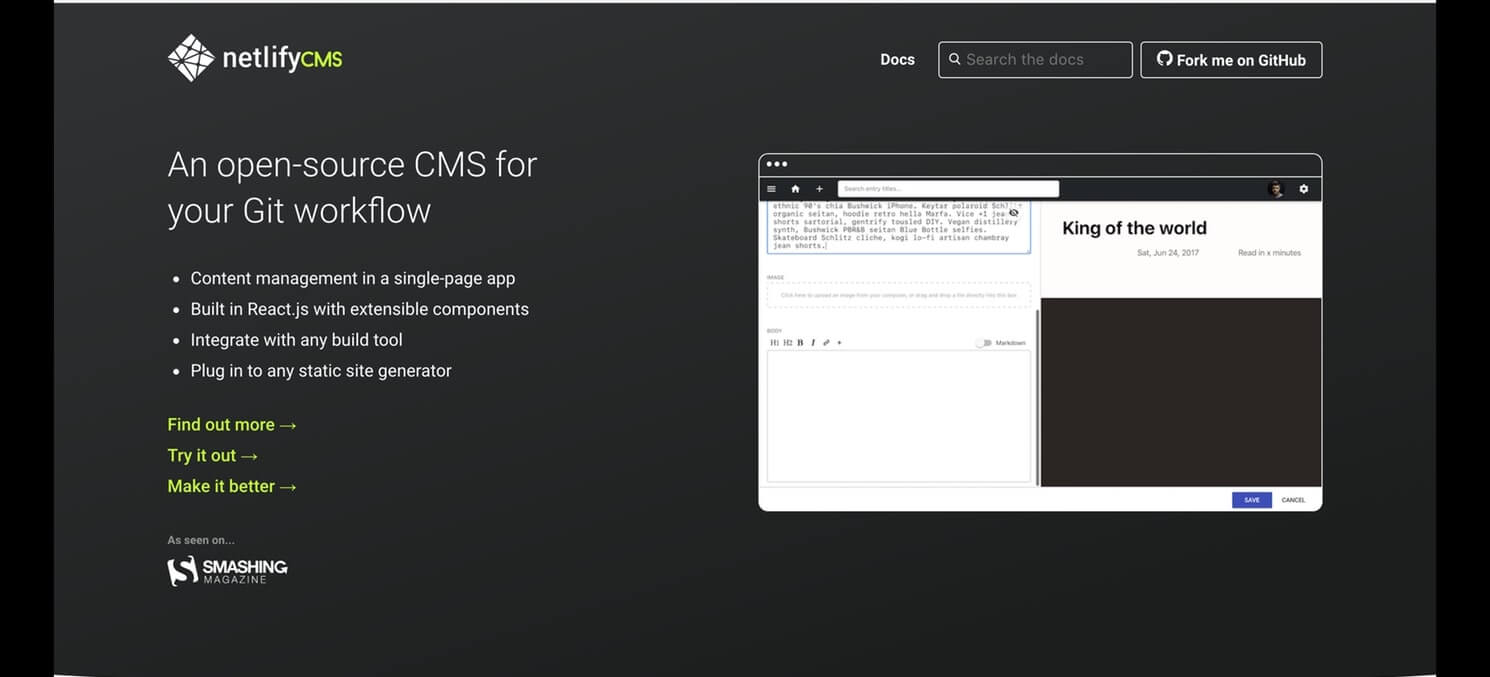
Netlify CMS is an open-source CMS made for static site generators, giving it headless CMS capabilities. It's perfect for creating quick, scalable, and safe web projects. Netlify CMS helps teams work together better by offering an easy interface for non-tech users to handle content. Plus, it gives developers lots of options for customization and flexibility.
Top 3 Features
- Git-based content management
- Simple and flexible
- Strong developer support
Pros
- Free and open-source
- Integrates well with static site generators
- Strong community
Cons
- Limited to static site usage
- Requires technical setup
Pricing
Free and open-source.
Choosing the Right Headless CMS for Your eCommerce Store
Beyond knowing how headless CMS works, picking the right one matters. You'll need to find the best tool that matches the needs of your ecommerce store. Below are some factors you should note:
Business Size and Budget
Depending on the kind of ecommerce store you are running, you have to choose a CMS that fits your business size and budget. While bigger companies might need more features, smaller ones can go with simpler headless CMS options. Also, it is advisable to go for a budget-friendly headless CMS so that you do not end up being bankrupt.
Technical Expertise
It is advisable to go for a headless CMS that adapts your content and application architecture and choose the frontend frameworks your team prefers like React, Angular, or Vue to meet design requirements. Also, consider the skill level of your team. Some CMS platforms are more developer-friendly, while others are easier for non-technical users.
Specific Needs and Goals
Figuring out the goals of your department or organization will make picking a headless CMS process smoother. When you understand what you want to achieve, it will help you know what features to look for in a headless CMS. This way, you can avoid remorse and keep from overspending.
Tips for Making an Informed Decision
After you've weighed the pros and cons and finally picked the best headless CMs for ecommerce, it does not stop there. You still have to make some finishing touches too, and here are tips that can guide you. They include:
Research and Compare
If you don't carry out personal research and compare the headless CMS you’d find, it's possible to end up picking the wrong one. So, try to check out different options and compare their features.
Try Demos
Presently, you can find a CMS platform that will let you run some tests before purchasing. Many CMS platforms offer demos or free trials. Run some checks and see which one feels right. You should make sure you understand the features they have and how they meet your business standards.
Read Reviews
Check out reviews and case studies to learn from others' experiences. This will help you know the pros and cons, including what to expect from the headless CMS software you decide to use.
Consult Your Team
The goal is to make work easier for everyone, so talk to your team to check the compatibility of the tool for both marketing and tech departments. Most e-commerce businesses make the mistake of not getting the input of team members. Doing this ensures the headless CMS will work perfectly for everyone.
Conclusion
Headless CMS for e-commerce is going to be huge in the future. Every business will want to use it to reach a global audience. They improve how fast pages load for users, let businesses grow infinitely, and offer flexible solutions, all while speeding up product launches. However, it also comes with challenges. But, to succeed, you need the right tools. The good news is that you can choose a package that fits your business needs and budget. Start-ups and small businesses might need to be flexible with their pricing, but that's okay. You can pick a monthly package that works for you or reach out to us for help. At the end of the day, It's about finding the right fit to help you achieve your goals.
